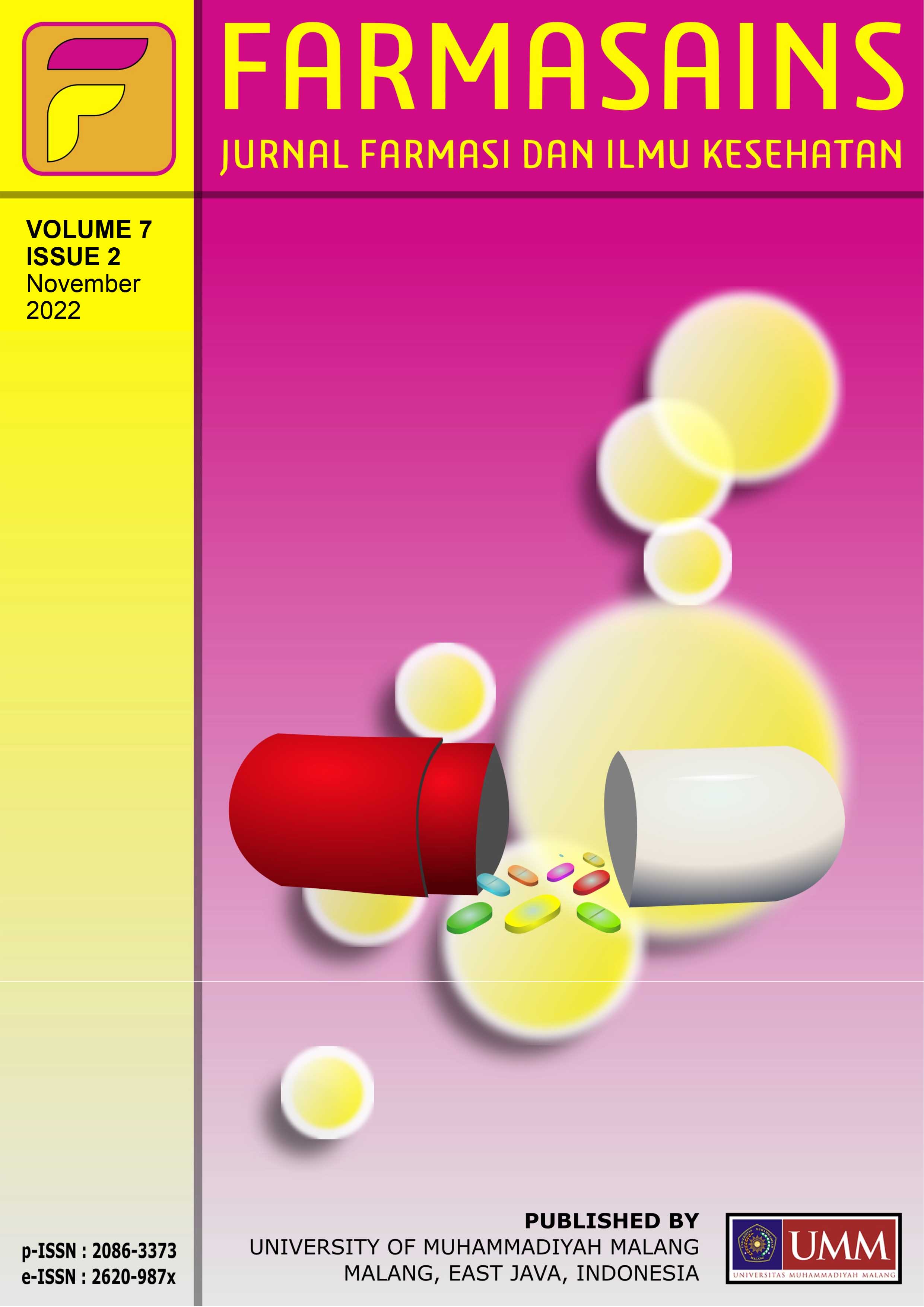The influence of marketing mix and service quality of Puskesmas Bojong Nangka against BPJS patient satisfaction
DOI:
https://doi.org/10.22219/farmasains.v4i2.8840Keywords:
Marketing mix, Service quality, SatisfactionAbstract
This study aims to analyze how the influence of the service marketing mix in this product, price, promotion, location, people, physical evidence, and the process, and the quality of health services in this case direct evidence (tangibles), reliability, responsiveness, assurance, and empathy at the Puskesmas Bojong Nangka\, Gunung Putri District, Bogor Regency towards patient satisfaction BPJS. The research method used a cross-sectional or cross-sectional descriptive analysis method. The place of research was at the Puskesmas Bojong Nangka, Gunung Putri, Bogor. The research sample amounted to 100 people. Data collection techniques are questionnaires and observations. Analysis of research data is by the Multiple Linear Regression test with Y1 = 1.515 + 0.064X1 + 0.073X2. The study concludes that the marketing mix and the quality of health services affect the satisfaction of BPJS patients in partial and both. Puskesmas quality variables more influence BPJS patient satisfaction compared to service marketing mix variables.Downloads
References
Arikunto, Suharsimi. (2010). Manajemen Penelitian, Cetakan ke sebelas, Rineka Cipta, Jakarta: hal. 262
DJSN, K . Peta Jalan Menuju Jaminan Kesehatan Nasional 2012-2019. (2012). Jakarta.
Hurriyati, Ratih. (2015). Bauran Pemasaran & Loyalitas Konsumen, CV Alfabeta, Bandung: hal 17-19,27-30, 47-48, 50-52, 54, 55,58, 59, 61-65.
Kotler, P dan G. Amstrong. (2008). Manajemen Pemasaran. Edisi ketiga belas. Jilid dua. Jakarta: Erlangga; hal. 5, 49.
Notoadmodjo, Soekidjo. (2010). Metodologi Penelitian Kesehatan. Jakarta: Rineka Cipta; hal. 37-38.
Nugraheni,et al., (2016). Kepuasan Pasien BPJS Kesehatan Terhadap Kualitas Pelayanan Kefarmasian di Pusat Kesehatan Masyarakat (Analisis Menggunakan Servqual Model Dan Customer Window Quadrant), Prosiding Rakernas dan Pertemuan Ilmiah Tahunan Ikatan Apoteker Indonesia: hal. 198, 204.
Pertiwi, AAN. (2016). Analisis Perbedaan Kualitas Pelayanan Pada Pasien BPJS Dan Pasien Umum Terhadap Kepuasan Pasien Di Rawat Jalan RSUD Kota Surakarta. Publikasi Ilmiah Mahasiswa Universitas Muhammadiyah Surakarta; hal. 6, 7.
Peta Jalan Menuju Jaminan Kesehatan Nasional [Internet]. Diakses 26 Agustus 2017. Diakses dari: http://djsn.go.id/draft-panduan/peta-jalan-menuju-jaminan-kesehatan-nasional
Priyatno, Duwi (2016). Belajar Alat Analisa Data Dan Cara Pengolahannya Dengan SPSS, Cetakan kesatu, Penerbit Gava Media, Yogyakarta: hal. 97, 103, 106, 109, 144, 150, 218.
Riduwan (2009). Pengantar Statistika Sosial, Cetakan kedua, Alfabeta, Bandung: hal. 13, 16.
Sampurno. (2017). Manajemen Pemasaran Farmasi. Yogyakarta: Gadjah Mada University Press; hal. 4-5.
Sangadji E.M. dan Sopiah. (2013). Perilaku Konsumen, Pendekatan Praktis disertai: Himpunan Jurnal Penelitian, C.V Andi Offset,Yogyakarta: hal. 92-93, 100-101, 116.
Sudjana. Metode Statistika. (2001). Bandung:Tarsito; hal. 40, 53.
Sugiyono. (2015). Statistik Nonparametris untuk Penelitian, Alfabeta, Bandung : hal. 2, 3, 13, 27, 41, 55, 257-259, 267,268, 286 – 288.
Undang-undang Republik Indonesia No. 36 tahun 2009. (2009). Tentang Kesehatan. Jakarta; hal. 1, 2.
Downloads
Published
How to Cite
Issue
Section
License
Copyright (c) 1970 Novi Henriyati Rahmi, Sampurno Sampurno, Wahono Sumaryono

This work is licensed under a Creative Commons Attribution 4.0 International License.
Authors who publish with this journal agree to the following terms:
a. Authors retain copyright and grant the journal right of first publication with the work simultaneously licensed under a Creative Commons Attribution License that allows others to share the work with an acknowledgement of the work's authorship and initial publication in this journal.
b. Authors are able to enter into separate, additional contractual arrangements for the non-exclusive distribution of the journal's published version of the work (e.g., post it to an institutional repository or publish it in a book), with an acknowledgement of its initial publication in this journal.
c. Authors are permitted and encouraged to post their work online (e.g., in institutional repositories or on their website) prior to and during the submission process, as it can lead to productive exchanges, as well as earlier and greater citation of published work (See The Effect of Open Access).













